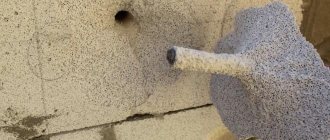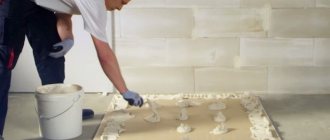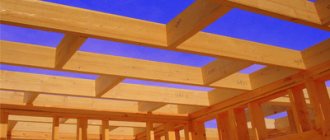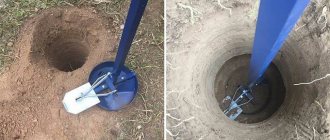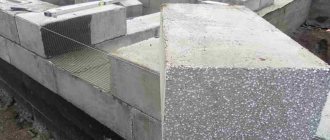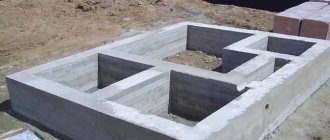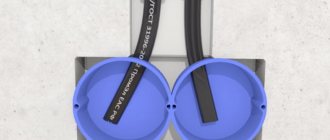During construction and debugging work, various consumables are used. In order for the connections to be strong and reliable during operation, it is necessary to select the correct fasteners. Modern models differ in their shape and size.
Each variety is designed for a specific type of manipulation. The choice of these products directly depends on the density of the building material for which they will be used.
Expansion type dowel group
It is designed for wall surface mounting applications in a wide range of:
- Furniture installation;
- Suspended ceiling parts, etc.
The name of the expansion metal dowel means that the fixation is carried out using the expansion method in a dense material.
In the old days, these were wooden choppers inserted into already made holes, after which self-tapping screws were screwed into them. This expansion of the node led to the required fixation. The work took a long time, so to speed up the process, standard sizes of structures were created for a specific drill diameter.
The products are made of nylon, propylene or polyethylene. For fixation to occur, there is a part in the dowel that moves outward when the screw is screwed in. They come in standard, short or longer lengths. There are tendrils, thanks to which the dowel holds perfectly in the wall, absolutely motionless.
Basically this is the best option for walls. Despite the fact that a load of twenty or thirty kilograms presses down, it is securely held by the spacer.
Facade self-tapping screw
In general, self-tapping screws are made of galvanized and stainless steel. But, if we are talking specifically about a facade self-tapping screw, which can be used to fasten a metal profile in a ventilation facade, then it is necessary to use a stainless steel self-tapping screw.
It doesn't matter whether the system is aluminum or galvanized. A stainless steel self-tapping screw is always used
An aluminum system, if secured with a galvanized screw, will enter into a chemical reaction and begin to rust. The fact is that different types of metals react with each other, the reaction is called “galvanic couple” - this is their chemistry course, seventh grade.
Non-ferrous and ferrous metals cannot be used together. Painted self-tapping screws are also prohibited, because When screwed in, the paint will come off. Therefore, for aluminum systems it is necessary to use only stainless steel self-tapping screws.
It may be strange and illogical, but galvanized self-tapping screws cannot be used for ventilation facades. Because galvanized screws are short-lived. And between the head of the screw and the profile, water can accumulate, increasing the corrosion of metals.
And since the systems are subject to increased reliability requirements, it is necessary to use a stainless steel self-tapping screw for metal profiles in accordance with the permitting documentation.
Features of application
Thanks to its sharp tip, the self-tapping screw can be easily screwed into metal whose thickness does not exceed 2 mm. The self-tapping screw is screwed in using a screwdriver, which, on the one hand, is very convenient, installation speed increases, and a minimum of effort is applied to screwing.
On the other hand, the screwdriver limits operation at temperatures below 20 degrees. He starts to work worse. The system can be installed at lower temperatures. Restrictions on the installation of the system are either related to the human factor, when people physically cannot work in the cold. Or the equipment refuses to work.
Self-tapping screws are not recommended for galvanized systems. But in aluminum systems, on the contrary, they are recommended. Why this is so is very simple.
Aluminum is a tough metal. And if you don’t screw the screw in - unscrew it, screw it in again - unscrew it, then the screw will fit tightly and get stuck. But in galvanized metals, the self-tapping screw does not fit well.
Firstly, the galvanized profile has a small thickness. Secondly, the self-tapping screw becomes unscrewed under vibration loads, which inevitably exist in any city. Therefore, a rivet is used for galvanized systems. Let's look at it below.
Universal dowels
The universal metal dowel is intended for installation work. Moreover, it is suitable for materials that have completely different densities. The methods of fastening are influenced by the base and its hardness.
In addition to expansion, the spacer part of the structure has the ability to fold at the opposite end. This creates an additional emphasis, which adds reliability in holding the suspended element. This is also affected by the material from which the wall is made. If it is empty, then an anchor type of fastening is formed.
The folding configuration of the product is capable of attracting a plastic strip as it is screwed, forming the thrust part of the crossbar. At the same time, the fastener can neither come out nor take a piece of the wall with it.
The twist configuration with the insert inserted forms a knot that makes movement of the screw impossible.
Universal elements are used in the same place as spacer elements. In addition, they are able to cling in places where spacers cannot hold. While they gain in ability to stay on the ceiling, they lose in terms of holding massive cabinets, tables, etc. This is an excellent fastener for:
- Wooden bars;
- Metal slats;
- Ceiling hanging parts.
Rules for installing and hanging cabinets
Before hanging the cabinet, you must:
- carefully level the walls;
- finish laying the electrical wiring, installing sockets and switches;
- complete the finishing of the walls - plastering, wallpapering, installing drywall;
- assemble the tool;
- determine the height of the headset;
- Mark with pencil or chalk.
To work you will need:
- electric or hand drill;
- hammer drill if the wall is concrete;
- level, preferably water;
- tape measure for measuring distance;
- screwdriver with a set of attachments;
- hammer and punch;
- clamps, if the boxes will be hung as a whole set;
- wrenches if anchors are used.
On a concrete wall
For hanging on a concrete base, anchor bolts are used, which guarantee reliable fixation. Mounting strips can be attached to screws that are screwed into plugs; holes for them are punched with a hammer drill. You can use a corner to attach the cabinet to the wall.
The appearance of small chips indicates low quality concrete. It is better to strengthen such walls with a 20 by 30 mm wooden lath.
On a foam block wall
Furniture must be secured to cellular material with air bubbles using special fasteners. Dowels, anchors, and nails will not hold, but can destroy the wall when the load increases. Fasteners that can be held in hollow material are called chemical anchors. They are an adhesive mass. They also hold dowels made of plastic, nylon, and metal.
Installation of fasteners in foam blocks is carried out as follows:
- mark the wall;
- drill holes with a drill corresponding to the dimensions of the fasteners;
- inserts the dowel into the hole, previously cleared of crumbs;
- tighten the screw.
You should not drill holes using a hammer drill: the material will crumble badly.
Features of fixing cabinets on a plasterboard wall
Mounting strips are attached to the surface of the plasterboard sheet with special self-tapping screws or anchor bolts, onto which furniture with adjustment fittings will subsequently be hung. This method is not suitable if the cabinets are designed for heavy kitchen utensils and appliances. Decorative cables or tubes are used to attach heavy kitchen cabinets to the wall.
Dowel for aerated concrete
The thickness and volume of aerated concrete, along with its relative hollowness, requires a large number of hooking points for reliable fastening.
There are three varieties:
- A metal dowel for aerated concrete, in which there are cutters, and the sleeve itself is made of iron sheet. By turning the screws, you get a kind of “biting in” effect that does not allow the fasteners to move. Reliable installation largely depends on the correct drill diameter. The dowel cannot be dismantled;
- The presence of helical ribs in a conical tube, where there are cuts combined with solid ribs, the length of which allows the load to be equally distributed around the circumference. Having approval from the German construction supervision, they are used for any installation work in aerated concrete;
The presence of an internal thread on a metal product makes it possible to hold it well in porous materials. Able to resist both shear and longitudinal loads, perfectly holding hanging cabinets in the kitchen, etc.
We install foam concrete fasteners correctly
In order for the fastening in the foam block to last for many years and withstand the expected loads, it is necessary to perform the installation correctly. It all depends on the chosen dowel, design features and task.
Screw-in dowels are made with a special thread, so they are very easy to install. Drive-in anchors are made with large teeth that expand into the drilled hole. Drive in the fasteners exclusively with a rubber hammer so as not to damage the foam block wall.
The chemical anchor is attached differently. A hole is drilled under it in the format of a cylinder with a conical cutout, then the hole is cleaned, a cylindrical sleeve is installed and the cavity is filled with a solution (or a capsule with glue is inserted, which, when crushed, releases the substance out), and a threaded rod is mounted.
Fastening dowels to a foam concrete wall
- First you need to prepare the necessary tools to carry out the work - the fasteners themselves, a screwdriver with drills (exactly matching the diameter of the fasteners or slightly smaller), a hexagon, a building level.
- Then the wall is carefully marked, planning the fastening points and using a level.
- Holes are made according to the marks - the length is equal to the length of the dowel + 2 of its diameters.
- Clean the holes with a construction vacuum cleaner or any tool that allows you to clean out foam concrete residues and dust.
- Use a hexagon to screw in the dowel.
- Next you need to mount the mount.
With the right choice of dowels in exact accordance with the loads and assigned tasks, it will not be difficult to perform a durable and reliable fastening. In Moscow and the region, other regions there is a large selection of various products by design, type, load, material
During the work process, it is important to follow the technology and sequence of actions, to do everything carefully and efficiently
Impact dowels
The name hammered metal dowel clearly indicates the method of fastening using a hammer. A simple and relatively cheap design along with simplified technology gives high performance.
Material nylon. The diameter of the drill is chosen the same as that of the dowel. When hammered, a nail with a cone-shaped edge expands the plastic, fixing it in the material.
Removal is carried out with a Phillips screwdriver. The head can be:
- Secret;
- Mushroom-like;
- In the shape of a cylinder.
With their help you can:
- Attach the baseboards;
- Attach the contour part of the suspended ceiling structure;
- Fix the threshold;
- Hang compact shelves.
Mounting options
There are 2 methods by which fastenings for kitchen cabinets are made. Installation is carried out:
- One line, that is, the location of the fastener is equidistant from the ceiling;
It is considered the most common type of accommodation. This way you can easily secure the cabinets yourself.
This method is used much less frequently, since its implementation is much more complicated than a linear fastening scheme.
The first method is popular because you can use only your own strength to attach kitchen cabinets, without turning to outside help.
The choice of option is determined by the number, size and depth of wall cabinets.
The second option for attaching fixation items is less common among ordinary people. This is because the roof of this furniture is used as an additional surface.
Any of the proposed variations is perfect for both a room with a small area and a large one.
And all because they do not have any effect on the fullness or compactness of the room.
When choosing a method, only the interior and design change.
Disc shape
A disc-shaped metal dowel has a special purpose, which is capable of fixing material due to its large pressing area of up to ninety millimeters.
- Preserves the design, as it can be easily covered with finishing. Thanks to this configuration, the load is distributed most evenly.
- Thus, the use of metal dowels for thermal insulation is very rational, since it does not allow the fragile insulation to break through.
- For installation, a hammer drill is used to make a wall hole.
- After that, all that remains is to apply insulation, through which to insert the “fungus” - the dowel - through.
- For fixation, a long nail is driven in, which, with its action, expands the sleeve made of plastic material.
- The hole should not be deep to prevent a dent.
- The material holds up well. The umbrella does not allow displacement to pass either along the wall or peel off from it.
In addition to wall dowels, there are structures used for installation work with roofing materials. In these cases, nails are driven directly into the concrete, providing support for both roofing felt and corrugated sheeting, along with other possible types of sheet panels.
Due to the size of the cap, water does not flow inside, and displacement is prevented by three large spikes. The plastic sleeve is easy to start, since the design includes a conical part.
Manufacturers rating
The Russian market offers dowels from foreign and domestic manufacturers. In terms of quality, Russian production is catching up with foreign analogues. The difference between them is primarily in price.
A popular supplier of facade dowels to the market is the fiberglass plant in Biysk. The product has low thermal conductivity due to its fiberglass material. The range of products consists of fasteners of various lengths with an anchor area of 50 and 80 mm and a cross-section of 1 cm, 5 mm, 7 mm, designed for fixing any insulation into bases of different densities. The standard diameter of the cap is 6 cm.
About a quarter of the fastening products market is occupied by the Tech-Krep trade and production association. The company produces products with izo plastic nail, izm galvanized nail, izl impact resistant polyamide head, izr steel nail and protective cover. Different lengths of the rod are capable of fixing the insulating layer from 5 cm to 24 cm. The anchor part is from 4 to 6 cm.
To fasten thermal insulation up to 15 cm, use fasteners with a plastic nail. Metal nails are used for materials up to 24 cm thick. The protective thermal head allows you to avoid corrosion during subsequent plastering of the facade.
Under the Termozit brand, the market offers façade dowels with a multi-colored thermal head on a galvanized nail. The polyethylene head on the rod prevents the appearance of corrosion and cold bridges at the attachment point. There are product models with anchor bases from 40 to 70 mm. The length of the structure varies from 95 to 300 cm.
The Russian company specializes in the production of facade anchor fasteners of four brands. The EFA-F modification is distinguished by the presence of a galvanized screw of increased strength. The EFA-FН and EFA-FСН brands have screws with an anti-corrosion coating with a strength of 6.8 and 8.8, respectively. The EFA-FA4 brand represents products with stainless steel screws.
Foreign manufacturers on the domestic market are represented by the brands Sormat, Mungo and Fischer. supplies façade dowels with nail, screw and hex washer. Fasteners are made of nylon and meet European requirements for installation products.
Finnish produces products with an increased wedge area. This allows you to securely fasten the material to any surface. The spacer structure with a 115 mm screw with a hexagon at the base is intended for fastening consoles and brackets.
A well-known supplier from Switzerland is . It offers three varieties of its products to the market. For fastening to solid bases made of concrete and brick, a dowel with a rod made from an MBR screw is suitable. With an increased anchor area, MV fasteners for hollow supports are produced. The universal design of the MQL brand is capable of fixing thermal insulation on any base due to four wedges of different distribution.
Photo of a metal dowel being driven in
Choice
The search for suitable dowels requires taking into account the type of surface to which the furniture will be attached. They are not installed on wooden walls. In other cases, you need to take into account the recommendations of specialists.
- Fastening to brick or concrete. Here it is worth considering simple metal or plastic dowels, wooden plugs for nails. They will be sufficient if the load on the wall is not too great and you plan to hang a shelf or kitchen cabinet.
- Mounting to drywall. Here special dowels are used that can provide reliable fastening. These can be butterfly or MOLLY products.
- Mounting light shelves with a minimum amount of additional decor or lighting. For them, it will be enough to use dowels or “butterflies” made of nylon.
- Heavy, heavily loaded shelves. Storage systems in the most critical areas of the kitchen, living area, and workshop require the use of the most reliable metal fasteners. These can be MOLLY dowels or classic metal versions.
- If there is cladding on the wall. If the base is hidden under the interior decoration, it is necessary to use bookmark bars with a thickness equal to that of the transverse frame. The best fasteners here are MOLLY.
Confirmat: nuances of application
This name actually hides the simplest screws. The fastener primarily differs from most others in the simplicity and accessibility of installation for everyone, since absolute precision is not required from the assembler.
In order to fasten the furniture pipe, you only need a drill. For independent work, it is advisable to immediately purchase a hex key, since there is a special hole in the head for it.
To install this part, you will need to additionally drill two new holes. One of them should be in the element that will be fixed, and the second - right at the end of the part itself.
The ease of the process of assembling any furniture using confirmat allows the master to drill holes independently, saving time.
You can make the repair process even easier by using an additional drill designed for fastening. But many craftsmen note that this device quickly becomes loose, so they make do with classic drills and, judging by the photos of furniture fasteners, everything goes well.
